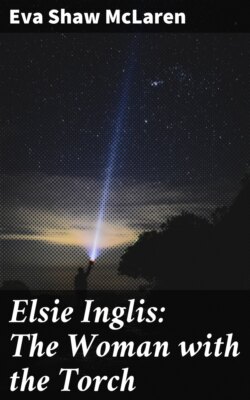Читать книгу Elsie Inglis: The Woman with the Torch - Eva Shaw McLaren - Страница 51
На сайте Литреса книга снята с продажи.
THE ROCK FROM WHICH SHE WAS HEWN
ОглавлениеTable of Contents
"It is not the weariness of mortality, but the Strength of Divinity which we have to recognize in all mighty things."
In the centre stands Elsie Inglis, the "woman of gentle breeding, short of stature, alert, and with the eyes of a seer," and "a smile like sunshine"; and on either side and behind this central figure the stage is crowded with men and women of long ago, the people of her race. One by one they catch our eye, and we note their connection with the central figure.
Far back in the group (for it is near two hundred years ago) stands Hugh Inglis, hailing from Inverness-shire. He was a loyal supporter of Prince Charlie, and the owner of a yacht, which he used in gun-running in the service of the Prince.
A little nearer are two of Elsie's great-grandfathers, John Fendall and Alexander Inglis. John Fendall was Governor of Java at the time when the island was restored to the Dutch. The Dutch fleet arrived to take it over before Fendall had received his instructions from the Government, and he refused to give it up till they reached him—a gesture not without a parallel in the later years of the life of his descendant. Alexander Inglis, leaving Inverness-shire, emigrated to South Carolina, and was there killed in a duel fought on some point of honour. Through his wife, Mary Deas, Elsie's descent runs up to Robert the Bruce on the one hand, and, on the other, to a family who left France after the revocation of the Edict of Nantes, and settled in Scotland.
As we thread our way through the various figures on the stage we are attracted by a group of three women. They are the daughters of the Governor of Java, "the three Miss Fendalls." One of them, Harriet, is Elsie's grandmother. All three married, and their descendants in the second generation numbered well over a hundred! Harriet Fendall married George Powney Thompson, whose father was at one time secretary to Warren Hastings. George Thompson himself was a member of the East India Company, and ruled over large provinces in India. One of their nine daughters, Harriet Thompson, was Elsie's mother.
On the other side of the stage, in the same generation as the Miss Fendalls, is another group of women. These are the three sisters of Elsie's grandfather, David Inglis, son of Alexander, who fared forth to South Carolina, and counted honour more dear than life.
David was evidently a restless, keen, adventurous man; many years of his life were spent in India in the service of the East India Company. Of his three sisters—Katherine, painted by Raeburn; Mary, gentle and quiet; and Elizabeth—we linger longest near Elizabeth. She never married, and was an outstanding personality in the little family. She was evidently conversant with all the questions of the day, and commented on them in the long, closely written letters which have been preserved.
After David's return from India he must have intended at one time to stand for Parliament. Elizabeth writes to him from her "far corner" in Inverness-shire, giving him stirring advice, and demanding from him an uncompromising, high standard. She tells him to "unfurl his banner"; she knows "he will carry his religion into his politics." "Separate religion from politics!" cries Elizabeth; "as well talk of separating our every duty from religion!"
Needless anxiety, one would think, on the part of the good Highland lady, for the temptation to leave religion out of any of his activities can scarcely have assailed David. We read that when Elsie's grandfather had returned from the East to England he used to give missionary addresses, not, one would think, a common form of activity in a retired servant of the East India Company. One hears this note of genuine religion in the lives of those forebears of Elsie's.
